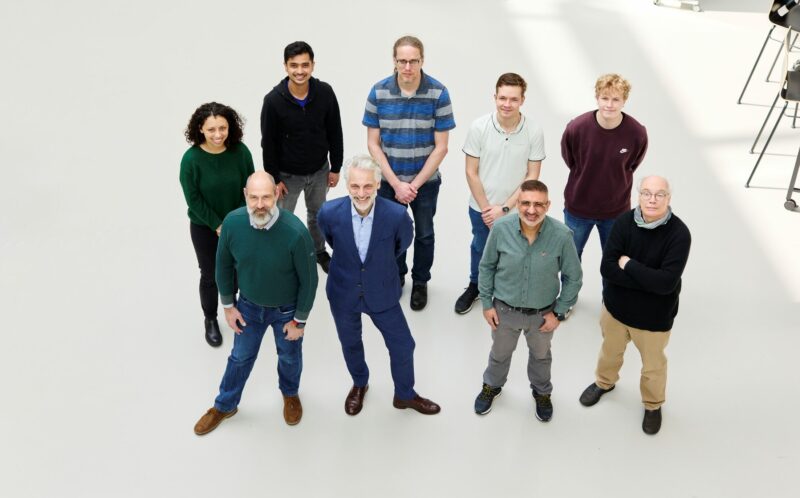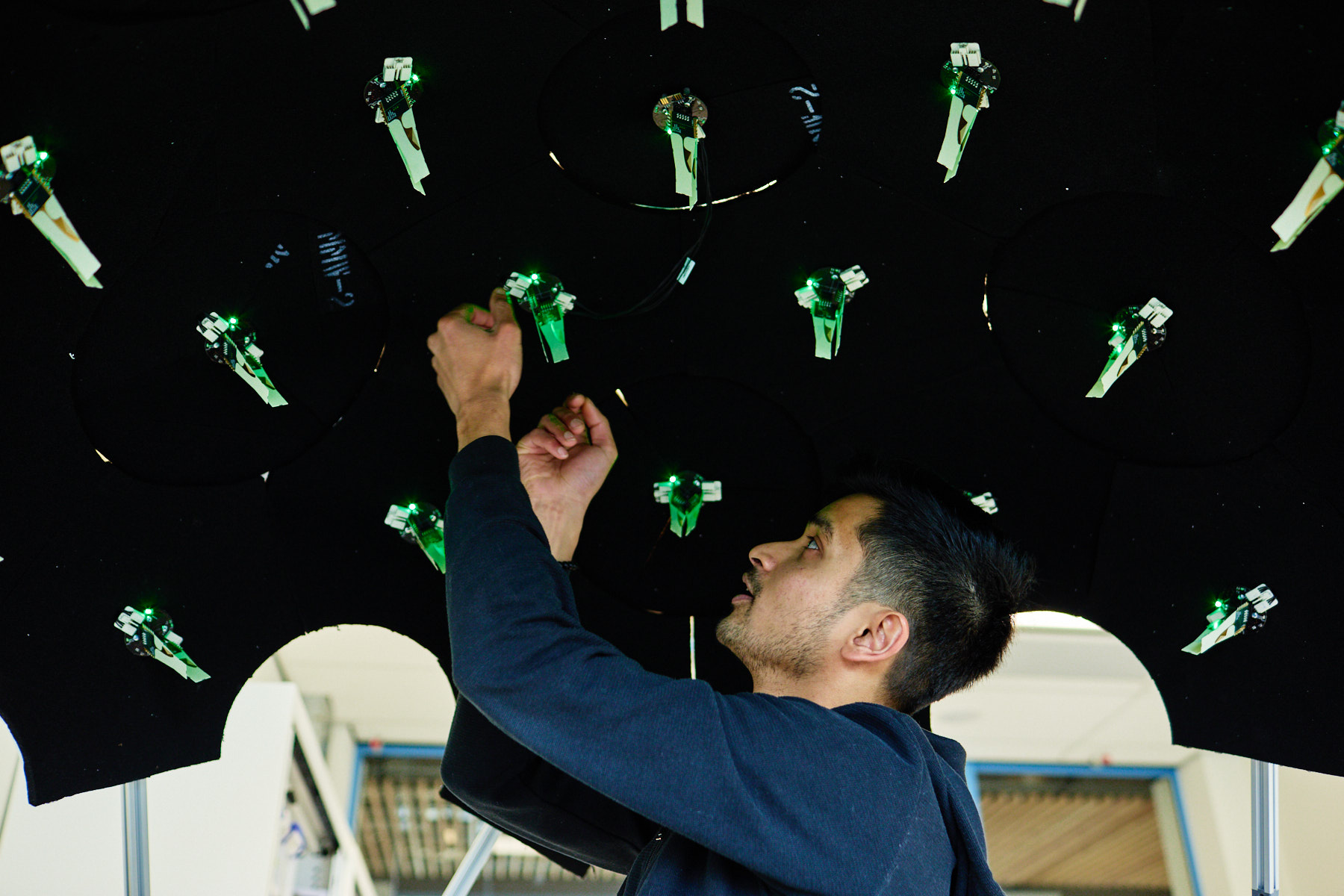The introduction of the next generation in telecommunication, 5G, will enable many innovations and improvement of digital processes. Before 5G is broadly introduced, the possible effects of electromagnetic fields on the surroundings must be clear. Do IoT Fieldlab is involved in this research.
The development and deployment of new technologies always raises many questions. First of all, on the capabilities and engineering challenges. Moreover, it is important to determine whether there are any side effects or even unwanted risks. Therefore, the European Union has launched various initiatives to conduct research into understanding and identifying possible effects. Researchers in twenty organisations collaborate in the European NextGEM project to objectify and validate the features of 5G.
Marco Spirito, Associate Professor Electronic Circuits and Architectures at TU Delft and John Bolte, professor Smart Sensor Systems at The Hague University of Applied Sciences jointly conduct the research on TU Delft Campus.
“Every time there are major changes in the communication system used, there is the necessity to understand if those systems are well embedded”, states Marco Spirito. “By adding layers and layers (i.e., frequencies) on the electromagnetic fields, we want to know: can there be causal consequences for living creatures and for humans? Is there a relation with stress? This research is very interesting. The EU brought together experts with different backgrounds; chemistry, biology and sciences. These areas of knowledge combined will secure a profound approach and a solid outcome.”
Need for knowledge
His fellow researcher John Bolte was already involved as a principal investigator for the effects of 4G, commissioned by the Dutch National Institute for Public Health and the Environment (RIVM). With every new generation of mobile networks, the EU sets a safe limit of exposure, based on very extensive measurements of the effects. “The 5G network is very different. There will be more and different frequency bands, and the lay out of the network is different as well. There is a great need for knowledge of exposure and correlated health effects. What are the effects on the body, for instance on the nervous system? Can you experience fatigue, a lack of concentration or sleep distortion? We are investigating this in a double blind set up, in order to prevent influencing the participants. We need to rule out the so-called nocebo effect, which is the contrary to a placebo: If you think something might make you ill, it probably will.”
The different partners in the consortium each have their own assignments and focus, although the separate parts complement each other. Part of the research will be executed by partners in other countries. For example, cognitive tests that take place in Belgium and analysis of blood samples in Switzerland and Israel. Marco: “We are glad we can use the Do IoT Fieldlab’s 5G facilities because we can fully customise and objectify the technological settings and preconditions. The fieldlab is very well geared for this. We are literally experimenting with fieldwork, which is a major step in maturing technology developed in a lab. Most of the measurements in Delft are related to exposure to the FR2 bands, so that’s mainly 26 gigahertz. We are developing small wearable devices that people can carry seamlessly during the day. It is very complex to draw conclusions from a measurement because we cannot entirely control the environment. Even if we measure twice in the same place, in a living environment, the environment itself is not the same. If I’m going to walk in the city centre of Delft during the day or at night, my exposure will be different because the environment has changed. We can make the experiment reproducible for many factors, but not for 100%. At a higher level, we will try to understand as best as possible what the correlations are. All the scientists will have to stretch their brain.”
Lots of gigabytes
Though 5G is not broadly being used yet, some experimental facilities and factories are using the 26-gigahertz band, with a pilot permit. “We measured what is the actual exposure and what is a typical or maximum exposure members of the general public and workers will encounter”, explains John. “The EU will naturally set a limit that is much lower than the actual maximum exposure limit. We are trying to objectify what the limit should be. What we notice is that the exposure slightly goes up every year, because more and more applications use wireless communication. If you are downloading or streaming movies in a train, you are obviously using lots of gigabytes. All the individual communication of people and systems, it all adds up.” “The large telecom companies are going to design their network on coverage, not on electromagnetic radiation”, adds Marco. “By joining forces throughout Europe we are speeding up the development of regulations and safety measures. Of course, we are not reinventing the wheel. A lot of knowledge has already been gathered worldwide. We know where the gaps are. That’s where scientists kick in. On a local level, TU Delft and The Hague University of Applied Sciences combine their expertise in a complementary way: my team conceives concepts. After lab tests, we want to test in a realistic environment. So the sensors are tested in the fieldlab and John’s team is the use case owner. Tweaking the bolts and screws because they are experts on the hardware. Which is very important in making sure we get useable and tangible results. We are so much at the forefront of technology that some things haven’t been invented yet. Which is, of course, a huge drive for everyone involved.”
“I fully agree”, says John. “At the same time, we know that our only guarantee is that experiments always work out in another way than we had planned or foreseen. So, you get imperfect measurements… and you have to repeat it over and over again. You need to have a high frustration resistance. It is a lot of work, but in the end, it is very rewarding, as soon as you get the data in and can start analysing. We can boast of our experience with 4G, our own gathered knowledge and the international exchange of knowledge with our project partners.”
The NextGEM project will be running until 2027. Nevertheless, that will not quite mean the end of all the 5G research. John: “I think that there’s a lot of work to be done and I’m pretty sure that the National Institute of Public Health and the Environment will continue gathering information for at least the next ten years. There’s a department permanently monitoring the health effects”.

Front row: Marco Spirito, John Bolte, Erdal Korkmaz, Fidelis Theinert
Back row: Leila Gottmer, Richard Coesoij, Derek Land, Stephan Littel, Jos Knol
More information
NextGEM stands for: Next Generation Integrated Sensing and Analytical System for Monitoring and Assessing Radiofrequency Electromagnetic Field Exposure and Health. This is a 4 year project funded by the EU.
For more information on the project and its partners please visit the website: https://www.nextgem.eu.



